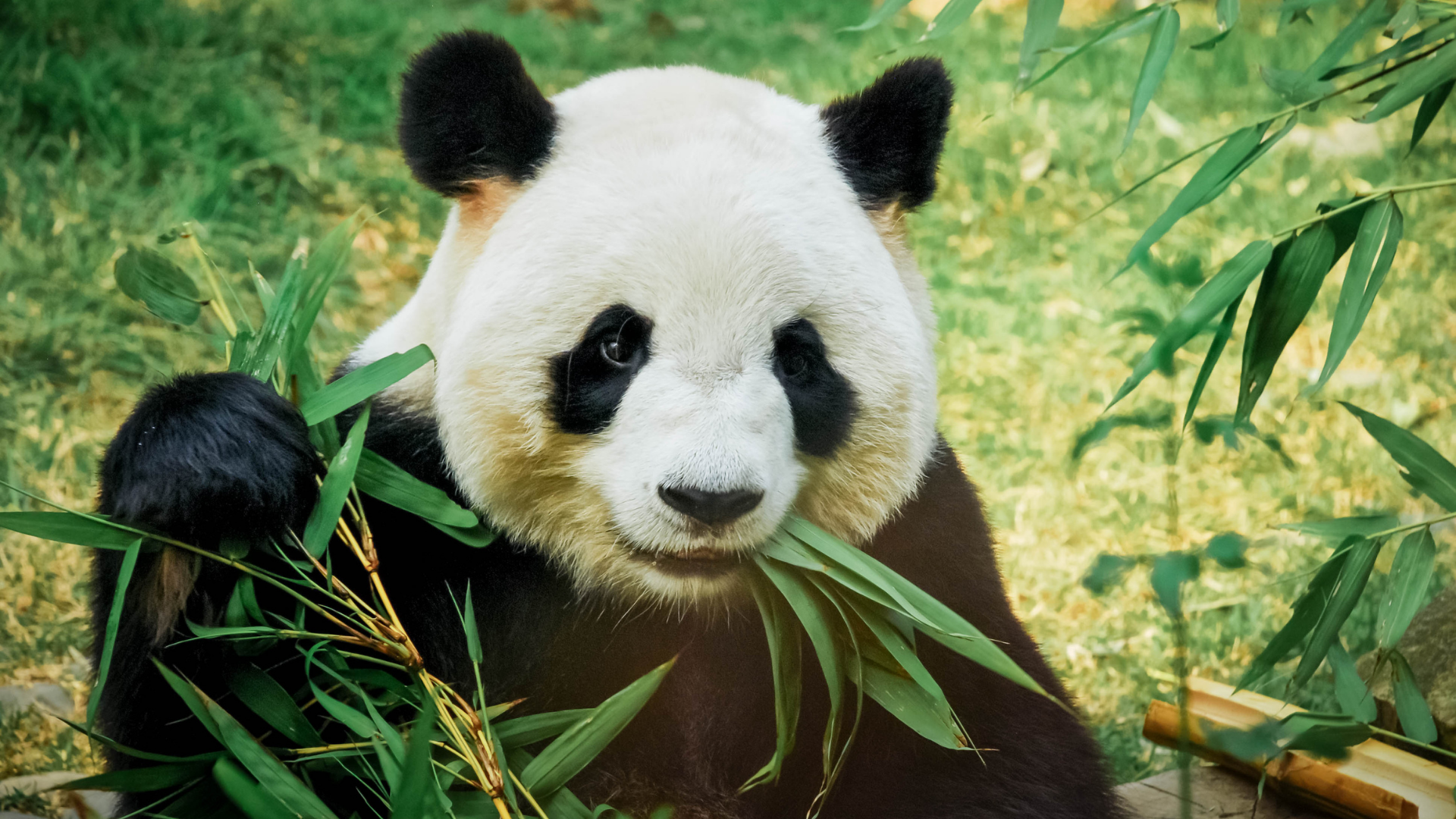Not easy to digest
The ancestors of the giant panda ate meat. Such carnivores have a much shorter and less complex intestinal tracts than planteaters. This is partially because animal proteins and fats are easier to digest, but also because meat spoils when it stays in the intestines for too long. It is therefore important for the predator to digest the meat and get rid of the remnants as quickly as possible. Modern-day pandas still have this kind of intestinal tract. This is not very convenient, as a panda’s main source of food is hard to digest bamboo. Luckily, they have a microbiome to help them. Scientists have discovered that this microbiome adjusts with the food that is available throughout the year.
Changing microbiome
Bamboo shoots are very nutritious, but not available all year around. Throughout the rest of the year, the panda must settle for nutrient-poor bamboo leaves. Luckily, they are not alone. Chinese scientists have discovered how the giant panda stays chubby all year round. It is because of their changing microbiome. A microbiome is the collection of microorganisms in, for example, the intestinal tract. Bamboo shoots are abundant in the spring. This is when the panda has more of the bacterium Clostridium butyricum in its intestines. Butyric acid is produced when this bacterium is metabolized, leads to the production and storage of more fat. The bacteria helps the panda to gain plenty of kilo’s. This compensates for the lack of nutrients a panda can consume when only bamboo leaves are available.
Panda fecal transplant
But how did they discover this? Mice were put on a bamboo-based diet simulating the eating pattern of pandas for a period of three weeks. They received a fecal transplant using panda feces to help the mice break down the hard to digest bamboo. With this transplant, the microbiome of pandas is transferred to the mice. The scientists collected feces from pandas living in the Qinling Mountains in central China. They did this during both the nutrient rich bamboo shoot season and during the nutrient poor bamboo leaves season. Mice that received bamboo shoot poop gained more weight and had a higher fat percentage than mice that received the bamboo leaf poop. The difference was significant, even though all the mice received the same amount of food.
But the scientists are not done yet. They want find out which other microbes live in the gut and what kind of impact these have on the health of pandas. For now, we can be happy that Clostridium butyricum helps the panda get enough fat on its bones to last all year round.
Sources
https://www.sciencedaily.com/releases/2022/01/220118111354.htm

